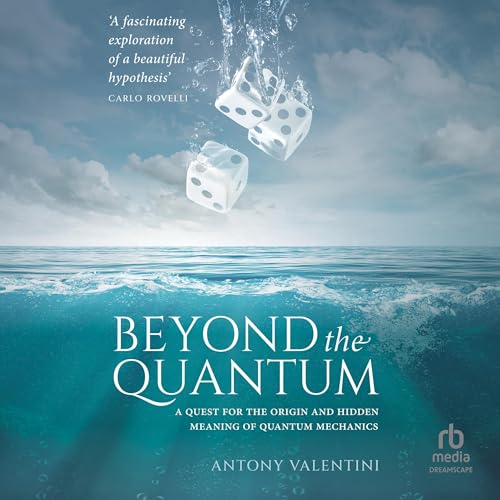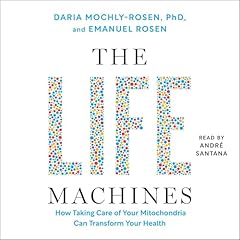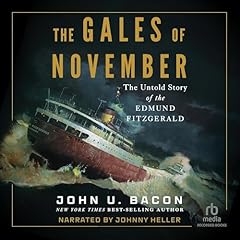
Beyond the Quantum
A Quest for the Origin and Hidden Meaning of Quantum Mechanics
No se pudo agregar al carrito
Add to Cart failed.
Error al Agregar a Lista de Deseos.
Error al eliminar de la lista de deseos.
Error al añadir a tu biblioteca
Error al seguir el podcast
Error al dejar de seguir el podcast
Obtén 3 meses por $0.99 al mes + $20 de crédito Audible
 Exclusivo para miembros Prime: ¿Nuevo en Audible? Obtén 2 audiolibros gratis con tu prueba.
Exclusivo para miembros Prime: ¿Nuevo en Audible? Obtén 2 audiolibros gratis con tu prueba.
Compra ahora por $26.88
-
Narrado por:
-
Mike Lenz
-
De:
-
Antony Valentini
Based on decades of research, this book offers a panoramic rethink of quantum physics, with potentially revolutionary implications for cosmology, quantum gravity, and quantum technology.
Properly understood, 'pilot-wave theory' provides a deeper foundation for quantum mechanics, while also going beyond it. First proposed in the 1920s by French aristocrat and physicist Louis de Broglie, and revived in the 1950s by American physicist David Bohm, the theory posits hidden particle motions we cannot currently see or control. The theory is usually regarded as merely an alternative account of the same physics we already know.
In fact, pilot-wave theory implies a wealth of new and radical physics beyond the reach of quantum mechanics. Pilot-wave theory tells us that quantum physics is a special case of something broader and deeper.
In more general 'nonequilibrium' conditions, Einstein's relativity and Heisenberg's uncertainty break down. Superluminal signaling becomes possible, and quantum particles can be clearly seen and controlled. This new physics could have left traces in the early universe, and it might be visible today in radiation from exploding primordial black holes. Harnessing this new physics would have transformative technological implications, in particular for communication, cryptography, and computing.
Drawing intriguing parallels between the present era of quantum physics and past episodes of scientific confusion, Beyond the Quantum tells the story of how pilot-wave theory was discovered and abandoned, revived and reconstructed, and how today it can pave the way to a new and radical physics beyond the quantum.
©2025 Antony Valentini (P)2025 Dreamscape MediaLos oyentes también disfrutaron:



Las personas que vieron esto también vieron:














It never becomes clear how this excess quantum noise causes relativity to exist, or how this noise causes the Born rule.
The author mentions Einstein dozens of times and says Einstein’s verdict on pilot wave theory was “unequivocal”, quoting it “has lifted a corner of the great veil” (that actually sounds pretty equivocal to me). Yet the author does not include Einstein’s quite numerous negative opinions of pilot wave theory. I am pretty sure Einstein (and John Bell) felt pilot wave theory was important as a example of an alternative to “traditional” QM (not that it was an improvement on QM).
The author describes entanglement related correlations as due to “superluminal communication”, while it is clear he knows that these correlations cannot be not due to communication (as communication could transmit information, which does not happen.)
While describing using entangled particles for instantaneous communication between planets and across the galaxy, the author mostly ignores the substantial difficulty in keeping entangled particles entangled.
This theory requires dropping relativity, the uncertainty principle, and the Born rule, as well as accept instantaneous superluminal communication, and a universal preferred reference frame (which is impossible to define or identify), all with exactly zero evidence.
I had always thought the lack of instantaneous action at a distance was a very good thing, as it prevents everything from happening all at once. Reading this book made me wonder if the author got it backwards. We are in a state of quantum life because we have escaped from the quantum hell of everything happing at once.
The narration of the somewhat difficult material was clear and excellent.
Quantum Messiah
Se ha producido un error. Vuelve a intentarlo dentro de unos minutos.


